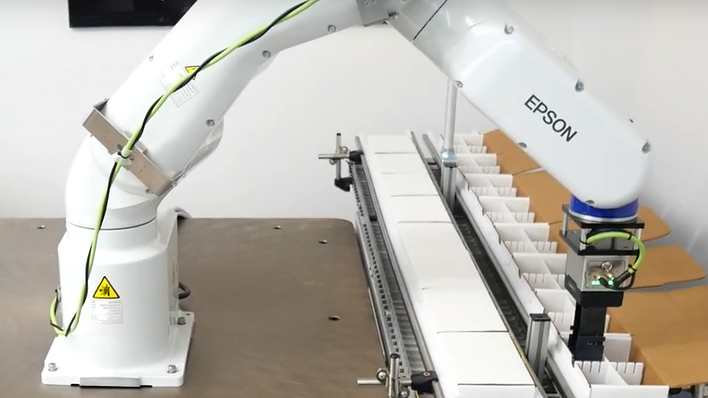“Nothing is so painful to the human mind as a great and sudden change” wrote Mary Wollstonecraft Shelley in Frankenstein. Words that will resonate with anyone who’s had new technology foisted on them at work.
Organizational change–including digital transformation–is more doomed to failure than many may realize, even with growing numbers of millennials in workplaces. Gartner research found that half of all change initiatives fail, while 16% get mixed results. Only 34% are clear successes.
This year 44% of businesses plan to increase their tech spend, and business adoption of AI-powered tech is expected to triple by 2021, according to a survey of IT buyers in companies across North America and Europe by Spiceworks. Gartner predicts that 69% of routine work currently done by managers will be fully automated by as soon as 2024.
And yet, research by Leadership IQ found that top executives are far more likely to be happy about leaving their comfort zones (42%) than frontline employees (22%) and middle managers (34%).
In other words, the less senior the worker, the less happy they’ll feel about getting to grips with new software. So, how can forward-thinking businesses avoid picketing employees? And, more likely, how can they prevent staff from inhabiting that perilous middle ground where they’re dragging their heels?
Incentivize
Career services manager William Ratliff has led teams at Employment Boost through periods of tech change, a job he describes as “difficult, no matter how much time a proposed improvement can save”. He recalls: “When I joined the firm in 2018, we were anticipating and experiencing explosive growth, and the existing patchwork of processes and protocols were breaking under the pressure.”
He believes demonstrating the incentives for switching to new technology is key for getting buy-in for operational and procedural changes both large and small. Ratliff remembers a time when the company’s sales team was “deeply entrenched in its ways”. He adds: “Scheduling hadn’t been meaningfully updated in years, and any alteration required the sales team to lose some control of the process.”
To make the transition as seamless as possible, they built a custom, internal portal for the sales team to use. He says: “We worked to minimize the intrusiveness of the change while making any new steps extremely simple, and we designed the new workflow with the sales process in mind. Can the rep navigate the new platform while on the phone? Will they have everything they need to accommodate customer needs? Once the time savings were clear, the sales team was enthusiastic about having more time to make calls and close sales.”
Educate
Chris Osborn, CEO and founder of VectorOne warns that employees who are kept in the dark will start to shape their own false narrative about how technology is going to adversely impact their jobs. He explains: “Often, the profile of those who feel the most reluctant of new technology are employees who are not connected to ‘why’ they do what they do. They simply know ‘what’ they do.”
To steer reluctant staff members through a period of digital change, Osborn says, you must paint a picture for them using a custom narrative. He warns: “Blanket announcements and statements of pending change, along with guarding information to keep it away from the masses, only widens the gap between the have and the have nots.”
Articulating to each position the benefits and potential pitfalls of the new technology should be a part of your project plan, he says.
Excite
Bridget Karlin, global chief technology officer at IBM, says companies need to get employees excited about what new technologies could help them achieve. She explains: “If we are going to ask our teams to make changes to their methods, we must first get them excited about how they are now positioned to deliver and support our clients better and faster, while also reducing silos, giving cross-office teams a more significant opportunity to collaborate and build on top of each other’s work. Automation methods, in their simplest form, free up individuals to be more innovative and focus on higher-value more stimulating work.”
Karlin remembers one example that caused a ripple effect in her team during IBM’s $34BN acquisition of software company Red Hat in 2019, when the team was in a position to start using its new automation tools. She explains: “A customer asked one of our team members to restart a service task on over 173 systems and provided a list of all the systems that needed this restart. He was able to use Red Hat’s Ansible automation tool to support this task and cut his process time by 50%.”
Teach
Training up staff to use new technology is a given, but Matt McLain, director of talent development at Save A Lot food stores says it needs to condense only the most important information, be tailored to the audience and delivered on mobile for convenience. He explains: “Our store teams were largely Millennial, but Gen X and Boomers prevailed in distribution centers, so we tailored our micro-content to different audience types to set them up for maximum success.
“Like almost all retailers, our operating model doesn’t work with a training program that places teams back of house on an aging computer in busy break rooms to slug their way through a 30-minute lesson. Our Gen Y and Z workforce needed knowledge on-demand, in the context of the task at hand.”
As such, the company has turned to video, producing one to two per month to explain new tech and new procedures. McLain recalls: “When communicating a new standard operating procedure for Amazon lockers arriving in our stores, we were able to transform an eight-page program guide into a 90-second video, and our teams answered questions faster and retained information better post-launch.”
He also advises keeping content hyper-relevant: “In every piece of training we develop, we also communicate ‘what this means to you,’ whether it’s labor savings or a metric that will impact a bonus, and that deepens engagement and helps our teams deepen their business acumen and have a sense of shared fate with the business.”
This article was written by Nigel Davies from Forbes and was legally licensed through the NewsCred publisher network. Please direct all licensing questions to legal@newscred.com.
![]()



